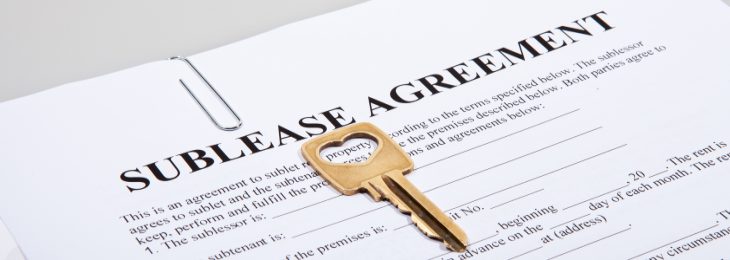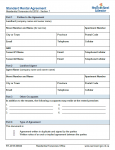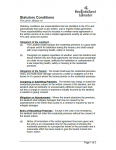Under the Residential Tenancies Act tenants have the right to assign or sublet the residential premises as long as they have written permission from the landlord. A landlord cannot withhold consent in an arbitrary or unreasonable manner.
Assignment
With assignment the tenant is just having someone else “take over” their rental agreement. Assignment would be the recommended option when the tenant has signed a fixed-term rental agreement and wishes to move out of the rental unit permanently before the fixed-term is up. With assignment all the rights and responsibilities of the original tenant are transferred to the new tenant once they take over the rental agreement. The original tenant is only responsible for the rental unit and the payment of rent up until the new tenant takes over.
When a tenant wishes to assign the remainder of their rental agreement they would be responsible for finding a replacement. The new tenant would enter into a rental agreement directly with the actual landlord for at least the time remaining on the original rental agreement.
Subletting / Subleasing
Subletting, also known as subleasing, occurs when a tenant re-rents some or all of the rental property to someone else while still holding a rental agreement with the original landlord. The original tenant then assumes the position of landlord in relation to their subtenant. Subletting would be recommended when the tenant has signed a fixed-term rental agreement but wishes to move out of the rental unit temporarily and return later. The tenant would grant another person the right to live in the rental unit for a set period of time but would still be responsible for the condition of the rental unit and making sure rent is paid on time.
In this type of arrangement, the original tenant holds a dual role. To the landlord they are a tenant and have all the rights and obligations of a tenant. To their subtenant they are a landlord and have all the rights and obligations of a landlord with respect to their subtenant. Essentially the original tenant acts as a middleman between the landlord and the subtenant.
For greater clarification, when subletting, there are the following parties:
- Landlord: This is the actual landlord of the property.
- Tenant/sublandlord: This is the original tenant, that has a rental agreement with the landlord AND the subtenant.
- Subtenant: This is the tenant that is renting the space from the original tenant/sublandlord.

When subletting it would be the sublandlord that would responsible for finding a suitable subtenant, and the rental agreement would be between the subtenant and the sublandlord rather than with the actual landlord. The subtenant would pay their rent to the sublandlord and would make any formal complaints or requests for repairs to the sublandlord. It would be the sublandlord’s responsibility, as a tenant of the actual landlord, to forward those complaints and requests on to the actual landlord of the property.
It is highly recommended that sublet agreements be made in writing. A Standard Rental Agreement can be used, a copy of which can be found in the “Files / Documents” section below.
A sublandlord cannot enter into a fixed-term sublet agreement that is longer than their original rental agreement with the actual landlord. A fixed-term sublet agreement can only be as long as the original rental agreement and after that time it would convert to a month-to-month agreement.
Important Note About Subletting
It’s very important for tenants to understand how subletting affects their rights and obligations before entering into such an agreement. Since the sublandlord is the person that has a rental agreement with the actual landlord it is the sublandlord that is ultimately responsible for ensuring that the terms of the original rental agreement are carried out. It is also the sublandlord that is liable to the actual landlord for any unpaid rent or damages caused by the subtenant.
In a sublet arrangement if the subtenants do not pay their rent or they cause damage to the rental property, the sublandlord is still responsible for ensuring the full rent amount is paid on time to the actual landlord and is responsible for repairing any damage. The sublandlord would then need to follow-up with the subtenants to recoup any costs they incurred. In the event of a dispute the sublandlord can file an Application for Dispute Resolution with Service NL following the usual process. More information can be found in our Help Topic on Filing an Application with Service NL.
Landlord Consent
Assigning and subletting can only be done with the WRITTEN consent of the landlord. However, the Residential Tenancies Act states that a landlord should not arbitrarily or unreasonably deny consent to assign or sublet a residential premises.
When a landlord denies a tenant’s request to assign or sublet in a manner that would be considered arbitrary or unreasonable, the tenant can serve a notice of termination on the landlord as a result of the landlord’s breach of a material term of the rental agreement. More information can be found in our Help Topic about Termination Notices.



